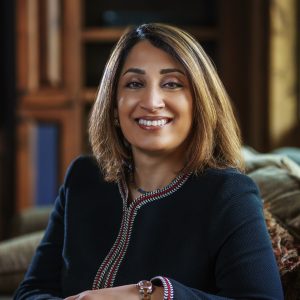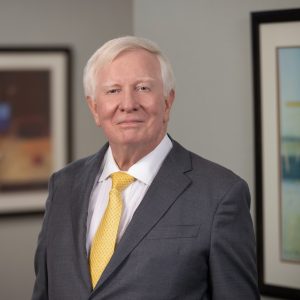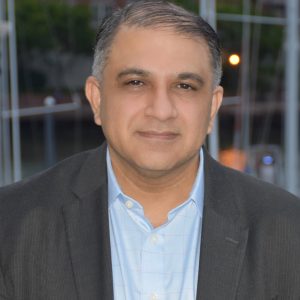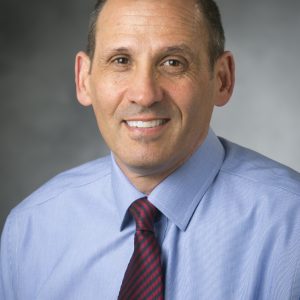CEO Leadership Series: Michael J. Daley, PhD, President and CEO, OrthogenRX, Inc.
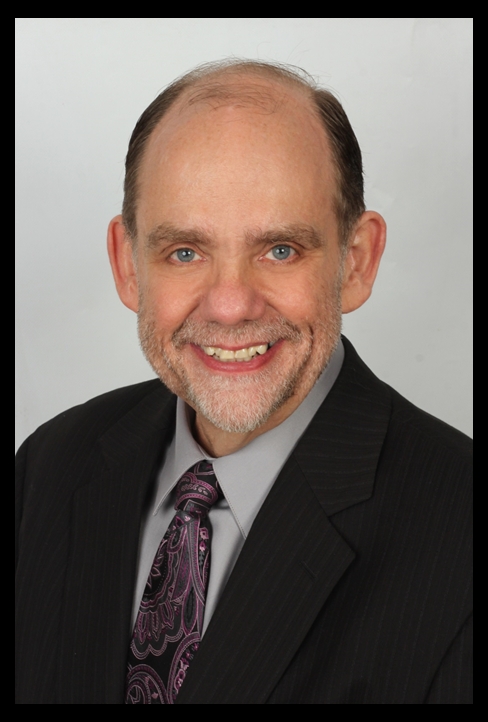
FROM SEED FUNDING TO FDA APPROVAL IN 20 MONTHS!
The biopharmaceutical industry was abuzz earlier this month with the long-awaited launch of Sandoz’ Zarxio™ (filgrastim-sndz), the first biosimilar to be marketed in the U.S. But lost in the fanfare of that announcement was perhaps an equally important industry milestone that had been reached just the day before, when the Food and Drug Administration approved a Class III medical device, GenVisc 850 (sodium hyaluronate), based upon “equivalence” to an approved branded product – one of a class of intra-articular hyaluronic acid (HA) medical devices approved for the treatment of osteoarthritis knee pain. Doylestown, Pa.-based OrthogenRx will not only be the first player in what might be a new class of equivalents for the Class III medical device industry (the FDA has yet to established a term for medical device equivalents, as it has for drugs (generics) and biologics (biosimilars), but the late-stage company has set a high bar for those that may follow it: achieving the approval – a process that can take six to eight years and between $70 and $100 million in development for pre-market approval (PMA) – in just 20 months.
The OrthogenRx team filed their first PMA just three and a half months after it obtained seed funding. At 12 months they received an Approvable Letter from the FDA, by 16 months they had undergone two FDA inspections with no major findings and just 20 months from seed funding they had an approval in hand. This is a remarkable series of accomplishments in such a timeframe for founder, President and CEO Michael J. Daley, PhD, David Toledo Velasquez, Senior Vice President and partner, and their team of consultants. The company is now set to begin marketing and selling the Class III medical devices in the United States through a Contract Sales Organization (CSO).
Perhaps most significantly, the FDA approved the OrthogenRx product not as a drug, but as a medical device – a distinction that, because the product is therefore reimbursed under Part B not Part D of Medicare, has a favorable impact on cost, price and reimbursement for the therapy. As a result, not only will the company be able to offer physicians a new, more efficient equivalent treatment for OA knee pain at a lower cost, the early adopters will actually receive better reimbursement compared to their cost. Dr. Daley expects OrthogenRx to launch its first product in 2016 under the trademarked name GenVisc. A number of additional products are in the pipeline that could be launched by 2017.
In an interview with Ashton Tweed, Dr. Daley discusses the importance of HA, how he cut years off the typical FDA approval process, and the role one of his favorite local restaurants played in launching OrthogenRx.
What is hyaluronic acid and why is it so important?
Hyaluronic acid is the dominant component in joint fluid. When you get arthritis, the concentration of this fluid goes down and it also starts to degrade. To use a more common analogy, it’s like you’re a quart low and your oil just changed from 50-weight to 5-weight – the viscosity goes down as the molecular weight breaks down.
With most products currently on the market, replacing the fluid requires three weekly injections. There are some single injection products on the market, but they often don’t work quite as well. We also know that any injection of HA is gone within 24 hours, so it seems that multiple injections are needed to “prime the pump” because the beneficial effects of pain reduction can last 6 months or more.
HA products were first approved in 1986 as drugs in Italy and in Japan. Then HA products came to the U.S. and the FDA made a determination to regulate them as a Class III medical device, because the agency believed the primary mechanism of action was mechanical (viscosupplementation) and they had previously regulated similar HAs for fluid replacement in ophthalmic surgery. Because a physician must inject the HA products in the office, which requires a fair amount of sophistication, they were regulated as a Class III device, the most stringent level of FDA regulatory oversight, similar to drugs.
Why did you look for European products to license – what was the opportunity you saw?
When I was at Sanofi as the Medical Director for Hyalgan, the first HA to be approved in the U.S., I became aware that the regulatory barrier for some products was often much lower in parts of Europe and approval is through the process of obtaining a CE Mark (a mandatory conformity marking for certain products sold within the European Economic Area). As a consequence of this process, the market is more competitive – there are about 50 HA-based products on the market. My strategy was to identify products that: (1) were identical or substantially similar to U.S. approved products, (2) were approved outside the U.S., and (3) preferably had some clinical and post-marketing data supporting their safety and efficacy. I then approached over a dozen potential partners to obtain an exclusive supply and license agreement for the U.S. market. We did a very intensive search on a number of HA products approved in Europe, some of which were approved as a drug and some as a device, and presently have several term sheets or agreements in place.
The FDA approved OrthogenRx’s first HA product, GenVisc 850 (GenVisc refers to generic viscosupplementation, and 850 to the average molecular weight of the product in kilodaltans) on September 2 and we’ll be launching that product shortly. We’ll be competing in the marketplace by providing HA products with competitive pricing and with significantly improved operating efficiencies. Our pipeline products will compete eventually in the entire HA class, which was estimated at $924 million in 2014.
What was the timeline for FDA approval?
After I obtained the exclusive supply and license agreements for a number of products, Ben Franklin Technology Partners signed on for seed funding in December 2013. We filed our first Pre-Market Approval (PMA) application three-and-a-half months later in April 2014. It’s pretty radical how quickly we were able to do that, especially when you take into consideration that we had only two full-time employees and a number of consultants working on this. We’ve built a pretty incredible team.
We worked continuously with the FDA and received an approval letter in December 2014 (our Medical Device User Fee (MDUFA) date that governs the metrics for performance by the FDA), just eight-and-a-half months after filing our PMA. The industry standard for having a PMA approved is six to eight years, with between $70 million and $100 million in development costs. We did it for less than $1.4 million, with probably one-tenth or less of the typical allocated resources. Perhaps even more amazing, we underwent six and a half days of audits by the FDA with no major findings or Form 483s issued – a feat only my partner David could have accomplished. I still remember the day we received the notice of Inspection for the Doylestown facility – at the time, because we are virtual, we only had an 80-square inch mailbox! In less than three weeks David, with the help of our consultants, put together an entire corporate governance, quality systems and applicable standard operating procedures. Our teamwork and ability to pivot to respond to challenges truly differentiates us.
How did you get so much accomplished so quickly?
Trying to be the first at anything with the FDA is always challenging. We worked pretty cooperatively with the agency and put together a reasonable data package. But I think the quality and dedication of the team, and our focus and clarity, made a real difference. I’ve worked in large organizations, and I think sometimes when you have a lot of money budgeted and a lot of resources at your disposal, you’re not as focused and trying to do too many things. Our team was laser-focused. We picked our first product and fostered outstanding relationships with our partners and worked hard to collaborate with the FDA. Part of it was also just luck – actually lots of luck!
How did you raise the initial funds to get started?
My initial investment was perhaps the toughest – convincing my wife that I wanted to put money into starting my own company. There may be a word for this but I don’t think convertible debt quite covers it. Entrepreneurs are often told that the second source should be “Friends and Family” – and I quickly realized I needed a new circle of friends and needed to be adopted. So I became very active in the local Pennsylvania and New Jersey biopharma and medtech ecosystem and have established a solid network of contacts and colleagues. Early on I met with Jennifer Hartt of Ben Franklin Technology Partners (BFTP) of Southeast Pennsylvania. She directs the life science investment and was incredibly helpful. I actually had to apply twice because they require matching funds to invest.
BFTP helped me focus my business plan and, through my network, I was able to connect with an orthopedic surgeon I knew when I was a Medical Director at Sanofi, who put together a syndicate of orthopedic surgeons in his network – that was our first investment. The strange thing about angels and venture capitalists is that they both adhere to the same rule, “Don’t be first in the pool, and never swim alone in the pool!” Once we had a lead, it seemed to be a lot easier. To date 60 percent of our investors are orthopedic surgeons and rheumatologists, which serves as a great validation of our business strategy because they are our customers as well. We soon closed on $712,000 in equity financing and a total of $750,000 in convertible debt and a SBA loan. Another fortuitous event was the fact that the Bucks County Pension Fund created a venture fund for startups in the county – Venture Capital for Bucks County (VC4BC). They administer it through BFTP, so if you’re located in Bucks County for every dollar of money you raise, you can get a two for one match. This is one of the most innovative funds nationwide and everyone I tell about it is totally blown away. With this money we were able to prepare our PMA, filed it, and eventually got it approved.
What’s the next challenge for OrthogenRx?
We feel pretty comfortable with the additional HA products we have in our pipeline, so our next challenge is to get FDA approval for those products. Then we need to get the Medicare reimbursement in place. Our HA medical devices are sold under Part B of Medicare under a buy-and-bill process, in which physicians buy the product and then get reimbursed by Medicare or private insurers. And, of course, we need to complete our Series A funding round.
How has your background prepared you to launch this company?
After earning a BS in biology at Northeastern University, I got a masters in experimental pathology at the Washington University School of Medicine in St. Louis. Then I transferred to the University of New Mexico School of Medicine to get a Ph.D. in medical sciences. So from that standpoint, I’m trained like a physician in all the basic sciences.
From this educational background, I focused on research, doing a postdoctoral fellowship in biochemical and molecular immunology at the Massachusetts Institute of Technology. I was also an adjunct professor at MIT for two years, which was great training because MIT exposes you to state-of-the-art technology. I also had a really great experience teaching undergraduate students.
After MIT I joined American Cyanamid and became a group leader in drug discovery in immunology and infectious disease. I also worked for a company called DCV Biologics, where I was Director of Clinical, Regulatory and Quality Affairs. These positions gave me a lot of experience in the early-phase clinical studies. I gained more experience in later-stage and clinical development when I was Medical Director of Internal Medicine Products at Sanofi Pharmaceuticals Inc. In that position, I oversaw the development of Hyalgan, the osteoarthritis knee pain medical device. I had one foot in the medical arena and one foot in all of the business concerns – that was a tremendous experience. Before founding OrthogenRx, I to headed up the U.S.-based clinical, regulatory and medical affairs division of TiGenix Inc. of Belgium.
How did you connect with the key members of your team?
OrthogenRx essentially got started at a little Members Only (not really – just a marketing scheme) breakfast club in New Hope, Pa. called Fred’s Breakfast. It’s where I met my business partner, David Toledo Velasquez. Without David we could never have accomplished what we have today. Both David and I immediately clicked – he’s a valued friend and we both gave up very successful consulting practices to make OrthogenRx successful. I often look back at that day and say the stars must have been aligned and I am forever thankful for it. I also met my General Counsel, one of my members of my Board of Directors, an investor and a part-time CFO, all at Fred’s. It only cost me a cup of coffee – which is always free at Fred’s. You never know who you’ll meet at there. Last month I had breakfast with Alex Gorsky, President and CEO of J&J. I believe it’s really a matter of very active networking (the good food does help) and being able to put together people based on their expertise and passion. So maybe I’m more of a yenta than a CEO of a start-up.
What advice can you give others just starting out on this path?
Don’t get discouraged and don’t be a recluse. It’s like a rollercoaster ride but you have to maintain your focus and motivation, and have realistic expectations. Surround yourself with a support system and good people for advice and help with your venture and, most importantly, know your weaknesses scientifically and in business. Some people get so focused on the science that they lose their vision of the business part. And some people get so focused on the business part that they lose sight of the science. You have to have kind of a renaissance view of things so you can integrate the business and the science, and make good decisions. Listen to others, be open to criticism and embrace it. Fulfilling your needs while helping others at the same time has seemed to work the best for me – what can I do for you and not the other way around. You also never know where that next critical connection is going to occur. There are a lot smarter people than I out there, but there’s no one that works harder or is more committed to success for my family, team and investors than I am.
Ashton Tweed would like to thank Dr. Michael J. Daley for this interview. If your company needs help from members of the Ashton Tweed Life Sciences Executive Talent Bank, we can supply that assistance either on an interim or a permanent basis. Additionally, if you are among the many life sciences professionals affected by the changes in the industry, Ashton Tweed can help you find the right placement opportunity — from product discovery through commercialization at leading life sciences companies — including interim executive positions and full-time placements. In either case, please email Ashton Tweed or call us at 610-725-0290. Ashton Tweed is pleased to continue to present insightful articles of interest to the industry.

Michael J. Daley, Ph.D.
Michael J. Daley, Ph.D.
Dr. Michael J. Daley is the founder, CEO and president of OrthogenRx. Prior to founding the Doylestown, Pa.- based company, Dr. Daley served as senior Director of clinical, regulatory and medical affairs division of the U.S. subsidiary of TiGenix Inc., a Belgium-based tissue engineering start-up. He also previously served as the Medical Director of Internal Medicine Products at Sanofi Pharmaceuticals Inc. (now Sanofi) and Director of Clinical, Regulatory and Quality Affairs for DCV Biologics, a limited liability partnership of a joint venture between DuPont and ConAgra. Dr. Daley earned a BS in biology from Northeastern University, an M.S. in experimental pathology from the Washington University School of Medicine in St. Louis, and a Ph.D. in medical sciences from the University of New Mexico School of Medicine. He completed a postdoctoral fellowship in biochemical and molecular immunology at the Massachusetts Institute of Technology, where he served on the faculty as an Instructor for two years before joining the industry as a Group Leader at American Cyanamid.


